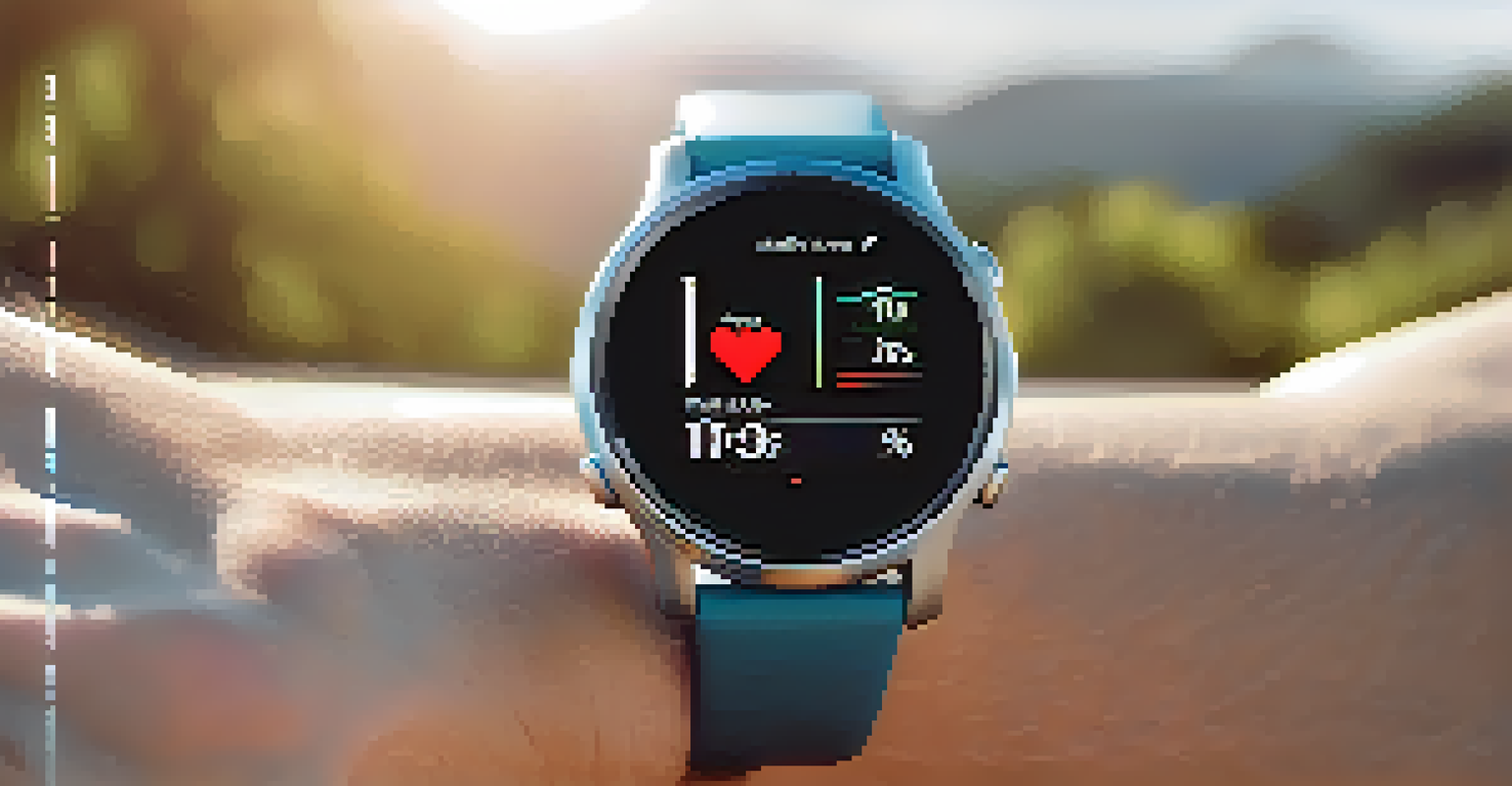How Biometrics Enhances User Experience in Technology

Understanding Biometrics and Its Application
Biometrics refers to the measurement and statistical analysis of people's unique physical and behavioral characteristics. This could include fingerprints, facial recognition, voice patterns, and even gait analysis. In the realm of technology, biometrics offers a method of user identification that is both secure and convenient, transforming how we interact with devices.
The greatest threat to our planet is the belief that someone else will save it.
As technology evolves, the applications of biometrics have expanded beyond security into everyday user experiences. For instance, smartphones now often come with fingerprint sensors or facial recognition, allowing users to unlock their devices with a simple touch or glance. This ease of access not only enhances security but also streamlines the user experience.
By integrating biometrics into various technologies, companies are moving towards a more personalized and efficient approach to user interaction. It’s like having a personal concierge for your digital life, making tasks smoother and more intuitive.
Enhancing Security with Biometrics
One of the most significant advantages of biometrics is its ability to enhance security. Traditional methods of authentication, such as passwords, can be easily forgotten or hacked. Biometrics, on the other hand, relies on unique physical traits that are much harder to replicate or steal.

Consider how facial recognition works in modern smartphones; it uses advanced algorithms to identify users with high accuracy. This means that even if someone has your phone, they cannot access your information without your unique facial features. It’s like having a lock that only you can open, ensuring your data remains safe.
Biometrics Enhance Security
Biometrics provide a more secure alternative to traditional passwords by relying on unique physical traits that are difficult to replicate or steal.
This level of security not only protects sensitive information but also builds trust with users. Knowing their data is safeguarded encourages users to engage more with technology, which ultimately enhances the overall experience.
Simplifying User Interactions
Biometric systems simplify user interactions by reducing the steps needed to access information or services. For instance, logging into websites can be a tedious process involving multiple passwords and security questions. With biometric technology, users can authenticate their identities with just a touch or glance.
Technology is best when it brings people together.
Imagine trying to remember multiple passwords for different accounts; it can be frustrating and time-consuming. Biometrics eliminates this hassle by allowing users to access everything they need quickly and effortlessly. This ease of use transforms the way we interact with technology, making it feel more user-friendly.
As technology continues to evolve, we can expect to see even more seamless integrations of biometrics in everyday applications, further enhancing our interactions with devices and platforms.
Personalization Through Biometric Data
Biometrics not only enhances security but also paves the way for a more personalized experience. By analyzing biometric data, companies can tailor services to fit individual user preferences and behaviors. For example, smart home systems can adjust settings based on recognized users, creating a customized environment.
Think about how voice recognition works with virtual assistants like Siri or Alexa. These systems learn from user interactions and can adapt to individual voices, providing a more personalized experience. This level of customization makes technology feel more intuitive and responsive to our needs.
Streamlined User Experience
Biometric technology simplifies user interactions by allowing quick authentication with just a touch or glance, eliminating the hassle of remembering multiple passwords.
As users become accustomed to personalized experiences, they are likely to engage with technology more frequently, leading to a deeper relationship between users and their devices.
Biometrics in the Health Sector
The health sector is another area where biometrics is making a profound impact. Health apps and devices often utilize biometric data to monitor vital signs, track fitness levels, and even manage medical records securely. This provides users with valuable insights into their health while ensuring their data remains protected.
For instance, wearable devices that monitor heart rates and activity levels often use biometric sensors to collect data. This information can be crucial for users looking to maintain or improve their health. It’s like having a personal trainer on your wrist, ready to provide insights tailored just for you.
By integrating biometrics into health technology, users benefit from both enhanced security and personalized health management, making it easier to stay informed and proactive about their wellness.
Challenges and Considerations in Biometric Technology
While the benefits of biometrics are clear, there are also challenges and considerations to take into account. One major concern is privacy; users may feel uneasy about their biometric data being collected and stored. Ensuring that data is handled responsibly and securely is crucial for building trust.
Another challenge lies in the accessibility of biometric technology. Not all users may have the same access to devices equipped with advanced biometric systems, which can lead to a digital divide. It's essential for companies to consider inclusivity when implementing such technologies.
Personalized Technology Interactions
By analyzing biometric data, companies can create tailored experiences that adapt to individual preferences, making technology feel more intuitive and responsive.
Addressing these challenges will be key in ensuring that biometrics can enhance user experience without compromising user trust or accessibility.
The Future of Biometrics in Technology
Looking ahead, the future of biometrics in technology appears promising. As advancements in artificial intelligence and machine learning continue, biometric systems will likely become even more accurate and efficient. This could lead to broader applications across various sectors, from finance to education.
Imagine a world where you can access any service just by being yourself—no passwords, no pins, just your unique biological traits. This vision is becoming increasingly attainable, making technology more seamless and integrated into our daily lives.

As we embrace these changes, it’s essential to prioritize ethical considerations and user privacy, ensuring that the evolution of biometrics enhances user experiences without compromising security.